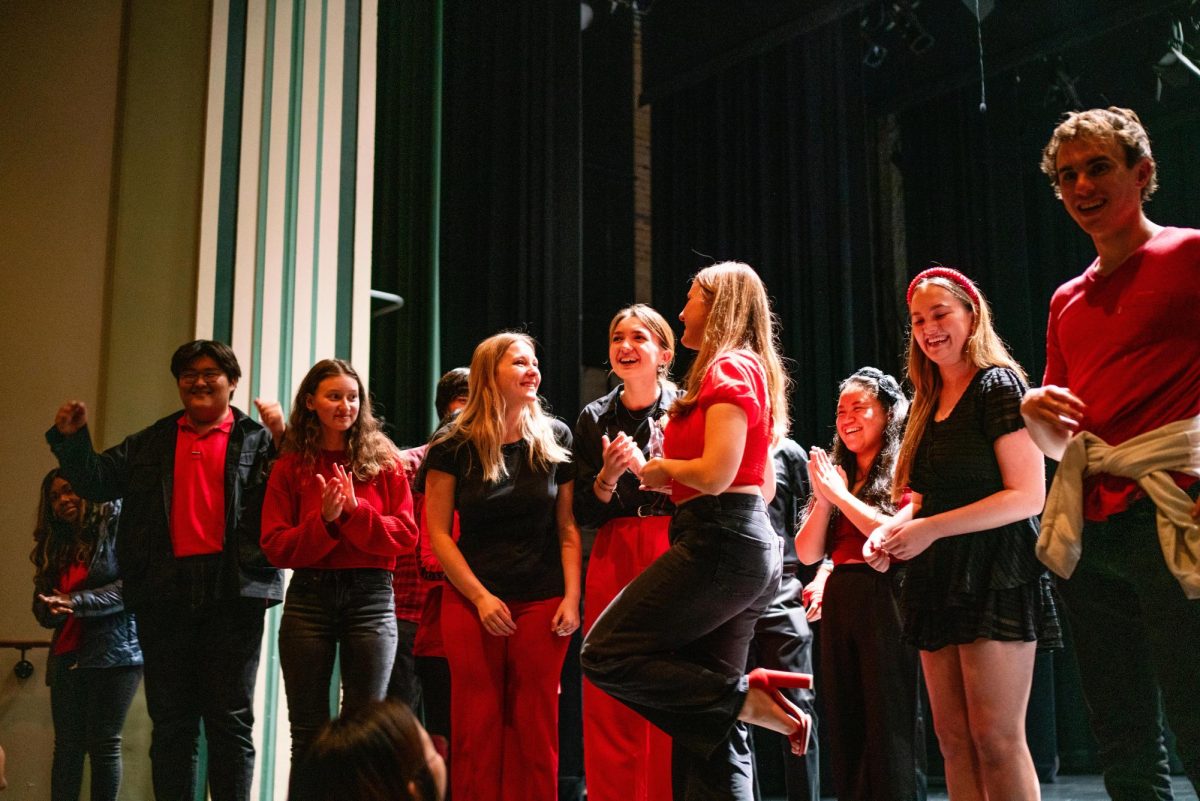The artwork curved along three walls within Murphy Gallery: framed works, sketches, even oil paintings on canvas. But no artists were present.
Instead, a binder tucked into a corner of the room served as the surrogate for the artists who spent that Thursday night in their communal home, the Danville Correctional Center. The exhibition, held at the University YMCA, served as the opening ceremony for an art exhibit devoted to the creative minds of inmates.
One oil painting, “Candy,” shows a lovingly detailed clutch of chocolate-covered candies and strawberries. A single, incongruous bumble-bee hovers above one of the treats. And although the painting’s artist, W.B. May, was not present at the gallery, his words were:
“My choice of using art as a means of expression wasn’t a hard one,” he wrote in the binder, which contained the voices of many more artists missing from the exhibit.
Greg Watson, recently retired from the Illinois Department of Corrections, said the Danville Correctional Center allows prisoners to get involved in an art program that helps them improve their skills as artists.
Get The Daily Illini in your inbox!
The program has a limited amount of spots, however, and usually involves a long waiting list of prisoners who are eager to participate in this skill-enhancing opportunity.
With the help of the Education Justice Project, a University-based program that provides college-level courses to individuals incarcerated at nearby prisons, a comittee of four inmates organized the exhibition, said Rebecca Ginsburg, director of EJP and associate professor of education.
Although EJP doesn’t run the art program, Ginsburg said leaders wanted to get involved in the creation of the exhibit because it allowed their students to engage intellectually in their artwork, which pushed them to think in new ways.
“(The committee) designed the fliers asking men to contribute art,” she said. “They decided on the selection criteria and selected the pieces, ran the meeting for the artists who’d been selected and wrote pieces for the catalogue.”
In the bound catalogues, many of the artists described how art alleviates the pains of routine life. Others discuss art as an opportunity to redefine themselves as individuals, instead of as prisoners.
Isaac Douglas Sr., an inmate whose artwork is featured in the exhibit, wrote in the catalogue that since his incarceration, art has become his passion.
“I plan to go to art school in the future and broaden my skills,” he wrote. “I was blessed with a sketch pad and I draw every chance I get.”
Douglas’ artwork made a large impression on Kristopher Scharringhausen-Long, junior in LAS, who visited the exhibit with a friend. Scharringhausen-Long intently observed a sketch done by Douglas called “In the Shadow,” which featured a dark graphite drawing of a man smiling.
“What caught my eye about this drawing was the artist’s transition from lightness to darkness,” he said. “It’s amazing what these artists can create with such limited materials.”
At the opening ceremony, Ginsburg said inmates don’t want to be seen so negatively. She said they want society to understand that people can change and that art has helped shape them as individuals who are progressing toward a brighter future.
“I’ve been honored to be part of a project that serves people in so many ways they find meaningful and fulfilling and that benefits society as well,” she said. “We think it’s very important to have a good understanding of what the benefits of our programs are and what aspects of the programs actually produce those benefits.”
EJP is currently conducting an evaluation of the program that will help it better understand the program’s impact on its students. The results of this evaluation will be released in mid-October.
Klaudia can be reached at [email protected].








